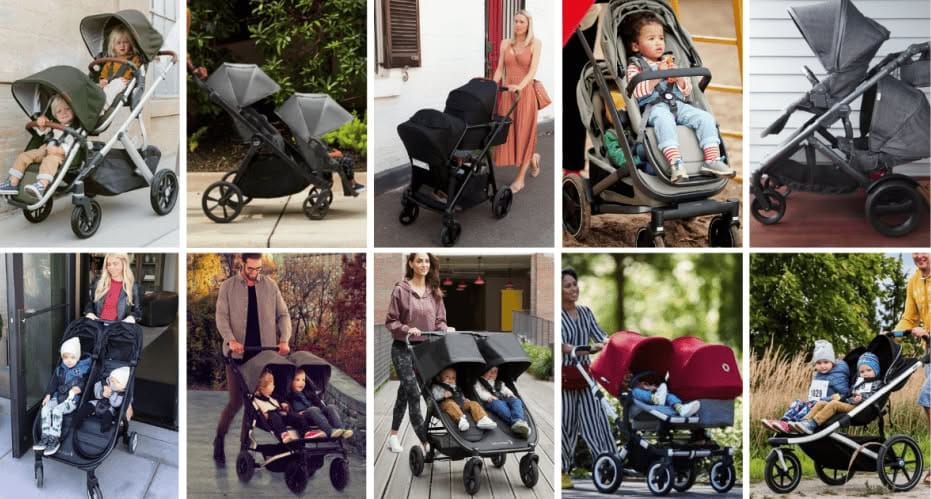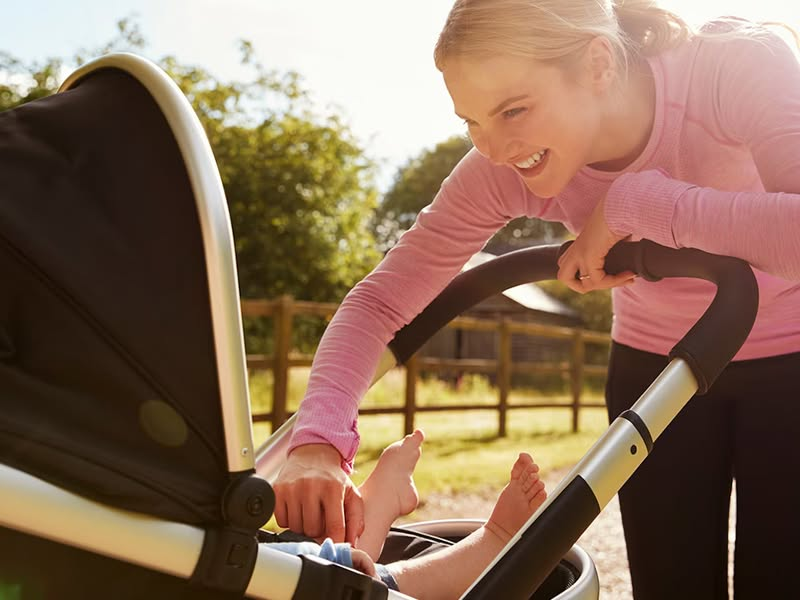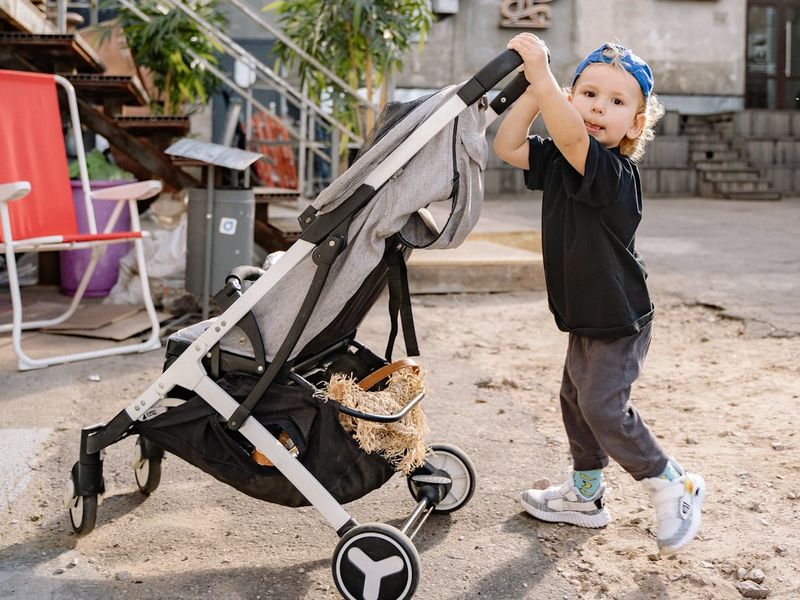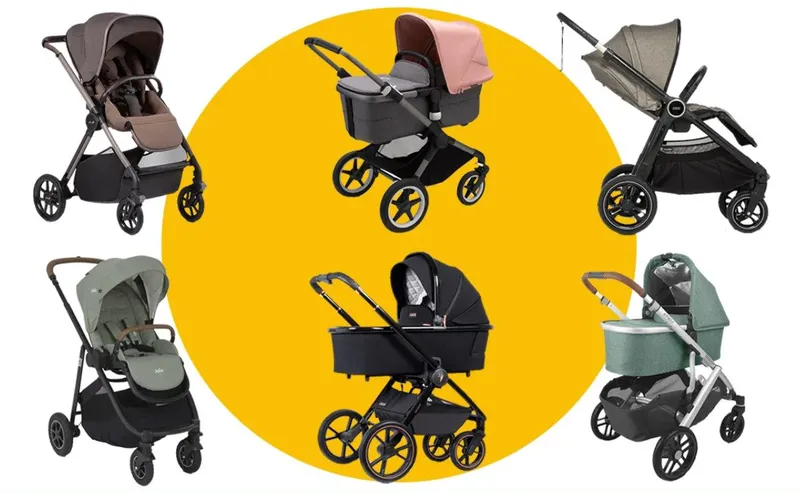
Introduction
You’re standing in John Lewis, surrounded by what seems like hundreds of pushchairs. Your heart’s racing, your phone is filled with screenshots of recommendations from parenting forums, and you’re wondering how on earth you’ll make the right choice. The price tags ranging from £200 to well over £2,000 aren’t helping your anxiety either.
Take a deep breath. You’re about to discover exactly how to choose the perfect pushchair without the overwhelming stress that many first-time parents experience. This guide isn’t about telling you which brand to buy – it’s about helping you understand exactly what you need for your lifestyle, budget, and peace of mind.
Understanding Different Types of Pushchairs
Before diving into specific features and brands, you need to understand the four main categories of pushchairs available in the UK market. Each type has been designed to solve specific lifestyle challenges, and knowing these differences will immediately help narrow your choices.
Core Pushchair Types: What You Need to Know
| Type | Best For | Not Great For | Weight Range | Typical Price Range |
| Lightweight Stroller | Urban living, Travel | Off-road terrain | 5-8kg | £200-£500 |
| All-Terrain Pushchair | Countryside, Parks | Small storage spaces | 12-15kg | £400-£800 |
| Travel System | Multiple transport needs | Tight budgets | 10-13kg | £500-£1200 |
| Compact Folding | Small spaces, Travel | Rough terrain | 6-9kg | £300-£700 |
Let’s break down what this means for your daily life:
Lightweight Strollers: The City Dweller’s Friend
These nimble pushchairs excel in urban environments. Weighing just 5-8kg, they’re ideal for navigating busy high streets, public transport, and compact living spaces. The lightweight design makes them perfect for climbing stairs or lifting onto buses. However, their lighter build means they’re less suited for rough terrain or off-road use.
All-Terrain Pushchairs: The Outdoor Enthusiast’s Choice
These are the 4x4s of the pushchair world. With robust wheels and sturdy construction, they handle everything from muddy park paths to gravel walkways with ease. The trade-off comes in weight and size – typically 12-15kg and a larger folded footprint. They’re ideal for rural living or frequent outdoor adventures but may prove challenging in urban settings.
Travel Systems: The Versatile All-Rounder
These systems offer maximum flexibility, converting from car seat to pushchair seamlessly. The price range (£500-£1200) reflects their versatility and multi-use design. While they excel at transitions between car and foot travel, the comprehensive feature set means they’re often heavier and more complex than simpler options.
Compact Folding: The Space Saver’s Dream
Modern engineering has revolutionized folding pushchair design. These models combine convenience with functionality, folding down to surprisingly small sizes. Perfect for small homes or frequent travelers, they offer a good balance of features and portability, though they may not match the robustness of larger models.
[Future link: Complete Guide to Travel Systems]Essential Features: Understanding What Really Matters
When evaluating pushchairs, not all features carry equal weight. Your lifestyle will determine which features are essential and which are merely nice to have.
Feature Priority Matrix
| Feature | Essential For | Nice to Have For | Not Important For |
| One-hand fold | Public transport users | Car users | Home users |
| All-terrain wheels | Rural dwellers | Park visitors | City dwellers |
| Large storage basket | Shopping trips | Occasional outings | Short trips |
| Reversible seat | Newborns | 6-12 months | Toddlers |
| Adjustable handlebar | Multiple users | Single user | Occasional use |
Let’s analyze these key features in detail:
One-Hand Fold Mechanism
This feature’s importance varies based on your typical routine. For public transport users, it’s essential – you’ll often need to fold your pushchair while holding your baby. However, if you’re primarily using your pushchair for home-based walks or car journeys, this feature becomes less critical.
Wheel Type and Quality
Your environment dictates wheel importance:
- City Use: Smaller, lighter wheels work fine
- Suburban Areas: Medium-sized wheels offer versatility
- Rural Areas: Large, air-filled wheels provide necessary stability
Storage Solutions
Consider your daily needs:
- Shopping Capacity: Look for easily accessible, sturdy baskets
- Weight Limits: Check basket weight limits – they vary significantly
- Accessibility: Ensure you can reach the storage when the seat is reclined
Price Range Analysis: Making Sense of the Market
Understanding what different price points offer is crucial for your decision. While it might be tempting to assume that more expensive always means better, the reality is more nuanced. Each price range serves different needs and lifestyles effectively.
| Price Range | What You Get | Best For | Features to Expect |
| £200-£400 | Basic functionality, simpler materials | Occasional use, backup | Basic suspension, standard wheels |
| £400-£800 | Better quality, more features | Daily use, single child | Better folding mechanisms, improved storage |
| £800-£1,500 | Premium materials, full feature set | Long-term use, multiple children | Advanced suspension, premium fabrics |
| £1,500+ | Luxury materials, brand prestige | Premium preferences | All features plus brand value |
What Your Money Buys
Entry-level pushchairs, typically priced between £200-£400, offer more than you might expect. These models focus on essential functionality without the bells and whistles. If you’re planning occasional use or need a backup pushchair for the grandparents’ house, these models can serve you well. You’ll get solid basic features, though you might notice simpler materials and basic suspension systems.
Moving into the mid-range category (£400-£800), you’ll find what many consider the sweet spot of value. These pushchairs incorporate more durable materials and enhanced functionality without reaching the premium price points. The suspension systems are notably better, and you’ll find thoughtful features like adjustable handlebars and more substantial storage baskets. This range often represents the best balance of quality and value for daily use.
Premium pushchairs, priced from £800-£1,500, introduce superior build quality and advanced features. The difference is noticeable in the smoothness of the ride, the quality of the fabrics, and the sophistication of the folding mechanisms. While these features aren’t essential for everyone, they can make a significant difference if you’re planning heavy daily use or expecting to use the pushchair for multiple children.
Common Buying Mistakes You Can Easily Avoid
When you’re investing in a pushchair, it’s easy to get caught up in the excitement of buying something new for your baby. Let’s explore some common pitfalls that you’ll want to avoid before making this significant purchase:
- The Brand-Name Trap
- The Feature-Overload Syndrome
- The Storage Solution Surprise
- The Weather-Ready Oversight
- The Growth Factor Miscalculation
- The Transport Transition Challenge
The Brand-Name Trap
That £1,500 pushchair might look stunning in the showroom, but here’s what you need to know: premium brands don’t always equate to a better experience. While high-end brands often offer excellent quality, you’re sometimes paying more for the name than the functionality. Independent testing shows that many mid-range pushchairs offer the same safety features and comfort levels as their premium counterparts.
What matters more than the brand name is how well the pushchair fits your specific needs. Premium brands might hold their value better for resale, but calculate whether the initial price difference justifies this potential benefit. Focus instead on finding a pushchair that matches your lifestyle requirements, regardless of the label it carries.
The Feature-Overload Syndrome
Picture yourself on a busy morning commute. Your baby needs attention, you’re trying to fold your pushchair, and you’re confronted with a complexity of levers and buttons that would challenge an engineer. This is the reality of choosing a pushchair with too many features.
While additional features might seem attractive during your shopping experience, they often translate to more weight, more complexity, and more potential failure points. Research indicates that most parents regularly use only about 60% of their pushchair’s features. Before being swayed by that built-in coffee cup holder or electronic folding mechanism, consider whether these features truly add value to your daily routine.
The Storage Solution Surprise
Storage seems like a simple consideration until you’re faced with the reality of fitting your pushchair into your daily life. Many UK homes, especially in cities, weren’t designed with modern pushchairs in mind. Even compact models can become a daily challenge in a narrow hallway or small entrance.
Think beyond the basic storage dimensions. Consider how your pushchair will fit through your front door, in your car boot, and in your home’s entrance. A pushchair that needs to be stored in your living room because it won’t fit anywhere else quickly becomes an unwelcome piece of furniture. Pay particular attention to the folded dimensions and whether you can easily maneuver it in your available space.
The Weather-Ready Oversight
Living in the UK means your pushchair needs to handle everything from unexpected downpours to harsh winter winds. Weather-readiness isn’t just about having a rain cover – it’s about choosing materials and designs that can withstand daily life in the British climate.
Consider the whole weather protection package. The rain cover should be easy to attach quickly when those surprise showers hit. The fabric needs to dry quickly between rain spells. The wheels should provide good grip on wet pavements. Sun protection might seem less crucial in the UK, but a good canopy is essential for those bright days when you want your little one to sleep comfortably.
The Growth Factor Miscalculation
Your newborn won’t stay tiny forever, and this is where careful forethought pays off. A pushchair that seems perfect for your newborn might become impractical as they grow into an active, curious toddler. Think about growth in terms of both your baby’s size and their changing needs.
Consider how the pushchair adapts to different stages. Does it offer good support for a newborn but also adjust to accommodate a toddler who wants to see the world? Think about the weight limit, seat depth, and whether the pushchair can evolve with your growing child. Remember that your storage needs will also grow as your baby gets older and you need to carry more supplies.
The Transport Transition Challenge
The way you travel with your pushchair will likely change over time. A pushchair that works perfectly for car journeys might become frustrating when you start using public transport more frequently. Consider how you’ll use your pushchair across different transport scenarios.
Think about the ease of folding, the weight when you need to lift it, and how it handles different terrains. If you use public transport, can you fold it quickly while holding your baby? For car users, will it fit in your boot with your weekly shopping? The right pushchair should make your journeys easier, not add to your travel stress.
Your Step-by-Step Decision Framework
Choosing a pushchair can feel overwhelming, but breaking it down into manageable steps makes the process much easier. Let’s walk through a practical approach to making your final decision.
The Lifestyle Assessment Stage
Before you even start looking at specific models, you need to understand exactly how you’ll use your pushchair. Your daily routine shapes your requirements more than any flashy feature list ever could.
Start by mapping out your typical week. Where will you be going with your pushchair? A quick walk to the local shops requires very different features from regular train commutes to nursery. Consider whether you’ll mainly use it for local errands, long walks in the park, or frequent travel on public transport.
The Budget Reality Check
Setting your budget isn’t just about deciding how much you’re willing to spend on the pushchair itself. Consider the full financial picture, including:
The true cost of ownership extends beyond the initial purchase. Your budget needs to account for essential accessories, potential maintenance, and the possibility of needing replacement parts. A £300 pushchair that needs £200 worth of accessories might not be the bargain it first appeared.
When and Where to Buy
Timing your purchase can significantly impact both your experience and your wallet. The UK market has distinct sales periods that savvy buyers can leverage:
- January sales often offer the best discounts on previous year’s models
- End of season clearances (spring and autumn) can yield significant savings
- Black Friday deals are becoming increasingly common for baby equipment
- Display models in store often come with substantial discounts
However, timing isn’t just about finding the best deal. You’ll want your pushchair ready well before your baby arrives, giving you time to practice using it and ensure it meets your needs.
Expert Tips for Testing Pushchairs
The difference between a pushchair that looks good in the store and one that works well in real life often comes down to how thoroughly you test it. Here’s your comprehensive guide to making the most of your store visits and testing sessions.
The Physical Testing Process
Understanding how your pushchair performs in real-world conditions is crucial. When testing a pushchair in store, resist the urge to simply push it around empty. Instead, ask if the store has weighted dolls or weights you can place in the seat. This gives you a much more realistic feel for how the pushchair handles with your growing baby.
Try every adjustment and setting. Fold and unfold it multiple times. Does it feel intuitive? Can you manage it while holding something else? These aren’t just optional features – they’re daily necessities that will make or break your experience with the pushchair.
The Terrain Test
Store floors can be deceptively smooth. If possible, test the pushchair on different surfaces. Many good retailers will have various floor surfaces or even outdoor testing areas. Pay attention to:
Your pushchair needs to handle all the surfaces you’ll encounter in your daily life, not just smooth store floors. Consider how it performs when transitioning between surfaces – this is often where lower-quality pushchairs struggle.
The One-Handed Test
In real life, you’ll often need to manage your pushchair with one hand while holding your baby, a bag, or opening doors with the other. Test these scenarios in the store:
Understanding how your pushchair performs in these scenarios is crucial because these won’t be occasional situations – they’ll be your daily reality.
The Storage Assessment
Don’t just look at the storage – test it properly. Bring your changing bag to the store. Try accessing the storage basket with the seat in different positions. Consider how you’ll manage your regular shopping trips. A storage basket that’s difficult to access quickly becomes frustrating.
Making Your Final Decision
After all this research and testing, how do you make your final choice? Let’s create a practical framework for your decision.
The Final Checklist
Before making your purchase, ensure your chosen pushchair meets these essential criteria:
- Fits your primary use case perfectly
- Matches your budget, including necessary accessories
- Meets your storage requirements
- Handles your regular terrain easily
- Can grow with your child’s needs
Next Steps After Purchase
Once you’ve made your decision:
- Register your warranty immediately
- Familiarize yourself with all features before your baby arrives
- Practice folding and unfolding until it becomes second nature
- Set up any accessories you’ll need from day one
Remember, the perfect pushchair isn’t the most expensive or the most popular – it’s the one that makes your daily life easier and more enjoyable with your baby.
Expert Tips: Your Pre-Purchase Testing Checklist
| Testing Aspect | What to Check | Red Flags to Watch For |
| Folding Mechanism | One-handed operation, stability when folded | Stiff joints, complex sequences |
| Handling | Steering, turning radius, brake effectiveness | Heavy steering, wobbling wheels |
| Storage Access | Basket accessibility, capacity, ease of loading | Difficult access when reclined |
| Comfort Features | Seat padding, harness comfort, recline positions | Sharp edges, thin padding |
| Build Quality | Frame stability, fabric quality, wheel attachment | Loose parts, flimsy materials |
Questions to Ask Retailers
When visiting a store, don’t hesitate to ask these crucial questions:
“What’s the warranty coverage and process?” The answer should be clear and comprehensive. Watch out for retailers who seem unsure or offer limited coverage.
“Can you demonstrate the folding mechanism?” A good retailer will show you multiple times and ensure you can do it yourself.
“What’s included in the base price?” This helps identify hidden costs for essential accessories.
“What’s the after-sales support like?” Look for specific examples of how they handle common issues.
[Future Link: Complete Guide to Pushchair Warranties and Support]Red Flags to Watch For
- Retailers unable to demonstrate all features
- Pressure to buy without thorough testing
- Unclear warranty terms
- Limited or no spare parts availability
Conclusion: Making Your Final Decision
Summary of Key Points
- Choose based on your lifestyle, not trends
- Test thoroughly before purchasing
- Consider long-term growth needs
- Factor in all costs, including accessories
Your Action Plan
- Define your requirements using our guidelines
- Research your shortlisted models
- Test in person using our checklist
- Verify warranty and support options
- Make your purchase with confidence
Related Resources
- Complete Guide to Travel Systems [Future Link]
- Pushchair Storage Solutions [Future Link]
- Transport Compatibility Guide [Future Link]
- Accessories Buying Guide [Future Link]
Internal Linking Structure
Throughout this guide, we’ve referenced several key topics that we’ll explore in detail:
- Type-Specific Guides:
- Lightweight Strollers Guide [Future Link]
- All-Terrain Pushchairs Guide [Future Link]
- Travel Systems Complete Guide [Future Link]
- Compact Folders Comparison [Future Link]
- Usage Guides:
- Urban Living Pushchair Guide [Future Link]
- Rural & All-Terrain Usage [Future Link]
- Public Transport Solutions [Future Link]
- Storage Solutions for Small Spaces [Future Link]
Remember, choosing a pushchair is a personal decision based on your specific needs. Use this guide as your starting point, and don’t hesitate to return to it as you move through your decision-making process.





